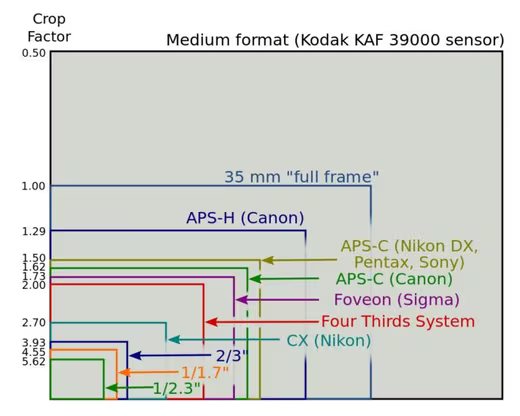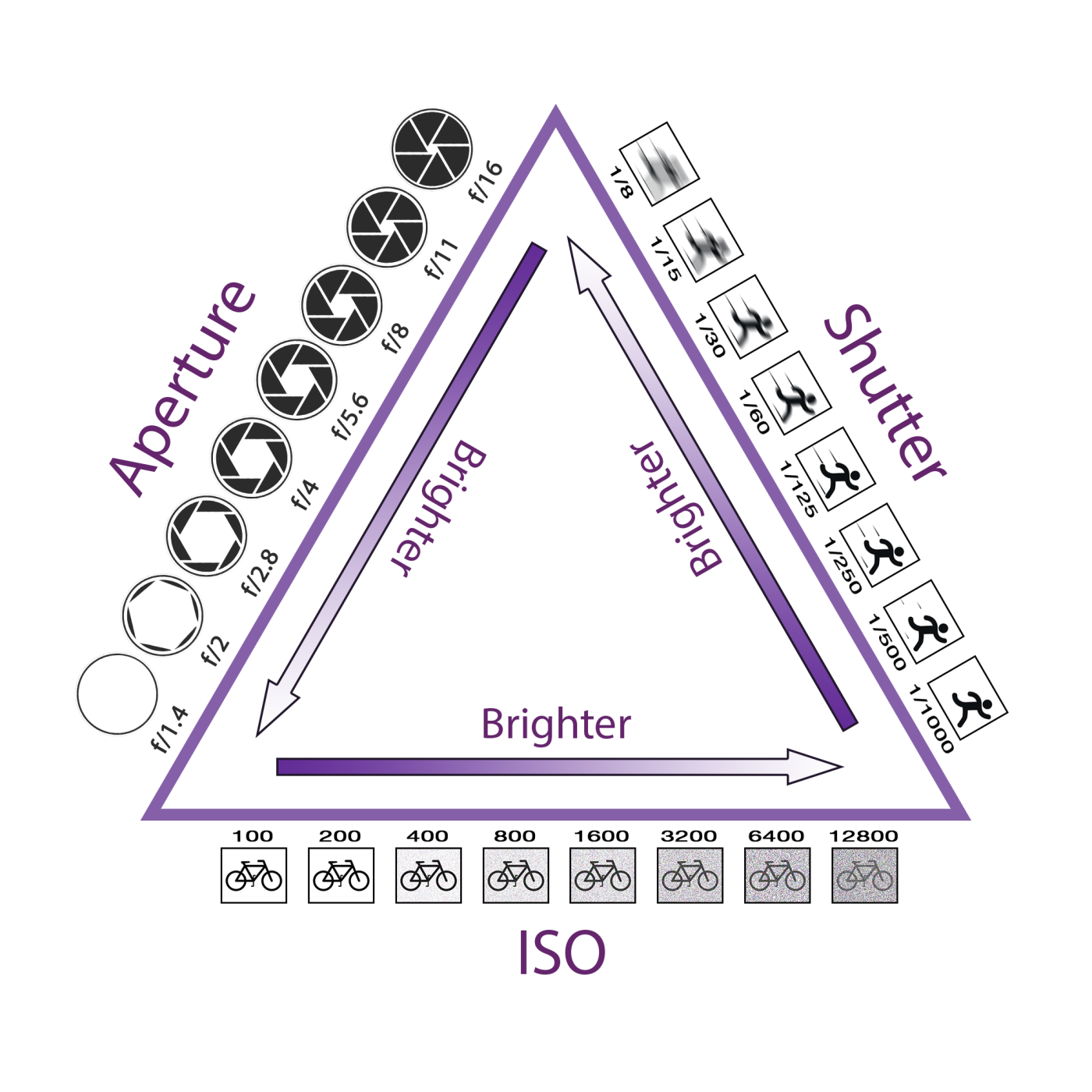
Camera Basics
Sensor Size
The crop Factor represents the difference in size between a 35mm film frame and the sensor of your camera.

In digital photography, the crop factor, format factor, or focal length multiplier of an image sensor format is the ratio of the dimensions of a camera’s imaging area compared to a reference format; most often, this term is applied to digital cameras, relative to 35 mm film format as a reference. In the case of digital cameras, the imaging device would be a digital image sensor. The most commonly used definition of crop factor is the ratio of a 35 mm frame’s diagonal (43.3 mm) to the diagonal of the image sensor in question; that is, CF = diag35mm / diagsensor
Given the same 3:2 aspect ratio as 35mm’s 36 mm × 24 mm area, this is equivalent to the ratio of heights or ratio of widths; the ratio of sensor areas is the square of the crop factor.
Depth of field
Shallow D.O.F.
f/2.8
Here the center, as example a person, is in focus. The left and right side is out of focus.
Deep D.O.F.
f/16
Here you can say that everything is in focus.
Exposure Interval
Short Intervals like 1/4000 freezes the motion
Long Intervals like a second will blur the subject in movement
Exposure
The exposure can be set from -3 up to +3.
Normally 0 is just right but if you want it brighter you can go up to +3 and of course if you want darker you can go down step by step to -3.
It all depends what kind of photo you want to take.
Shutter Speed
If you set a slow shutter speed like 30, 15, 8, 2 or 1 second a tripod is recommended.
You use that for night or low light photos as example as also for long exposures or a blur motion
If you than swap over to 1/30, 1/50 second handheld is OK.
You use this on sunny days, family shots or outdoor photos.
And than you have 1/100, 1/250, 1/100 for less light scenes.
This is used for shorter exposure and to freeze actions.
ISO
In resume you can say to use low ISO in good lightning and high ISO in bad lightning.
As example on a sunny day without clouds you can use ISO 100. When some clouds are coming you can move up to 400. If now there is no sun but just clouds you need to swap to 800 and on heavy clouds even up to 1600. At night with only the moonlight available maybe 6400 is good.
These are just examples – you need to find out yourself what is best for your actual case of course.
Aperture
The aperture is mostly given in f/2.0 up to f/8.0 (f/8.0 is not the max – you can even have/use f/22 – I just mention the commonly used values).
f/2.0 is an open aperture and here the photo is lighter. With this you can blur the background and it is often used for shooting portraits.
f/8.0 is a closed aperture and the photo will get much darker. Here you can shoot clearer backgrounds and it is mainly used for shooting landscapes.
Exposure Triangle

Focal Length
Often you here that someone has a lens with 50mm or 300mm etc. This in fact indicates the angle used.
So you have 180° whitch corresponds to 8mm (extra wide) – This one is rarely used for shooting photos.
The most common used one is 46° aka 50mm and than it goes up to 8° aka 300mm (tele)

